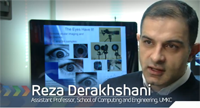 |
UMKC Faculty Develops New Biometrics TechnologyReza Derakhshani developed a new technology to scan the whites of the eyes as a means for biometric identification. |
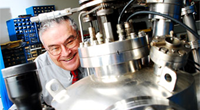 |
Glass Fiber Developed at Missouri S&T Helps Heal WoundsHard-to-heal open wounds may have met their match in the form of a cottony glass material developed at Missouri University of Science and Technology. |
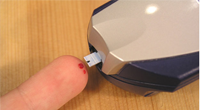 |
Pain-free way to Check Blood Glucose Moving to MarketPeople with diabetes could soon have a pain-free way to check their blood glucose levels thanks to researchers at the University of Missouri–St. Louis who have developed a portable, inexpensive non-invasive blood glucose detector. |
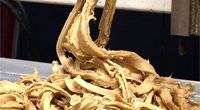 |
CAFNR Works to Improve Sustainability, Appeal of ‘Soy Chicken’It's well known that cholesterol-friendly, soybean-based food is good for our hearts. While the ersatz materials can be made to taste like the real thing, they usually feel a little funny in the mouth. That could change soon. Fu-Hung Hsieh, a University of Missouri professor of biological engineering and food science at the College of Agriculture, Food and Natural Resources, is finishing a project to create a soy product that looks, feels, pulls apart and, most importantly, chews like real chicken. |
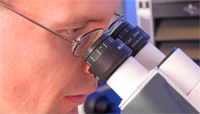 |
A Vision of HopeIn the United States, more than 9 million people older than age 40 have age-related macular degeneration (AMD). By the year 2030, an estimated 20 million Americans will have been diagnosed with this disease that destroys one’s sharp, central vision that is needed to see objects clearly and perform tasks such as reading and driving. |
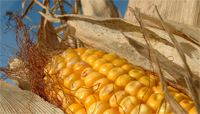 |
Study Could Lead to Better Corn PlantsA University of Missouri researcher has received a $6.6 million grant from the National Science Foundation to lead a research team to study the genes that control the movement of carbohydrates in corn. This research may lead to increased yield, more drought resistant plants, larger plants and easier production of biofuels. |
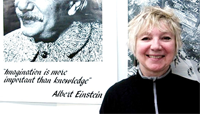 |
UMKC Researcher Works to Reduce Sepsis InfectionsWhen a team of scientists in Portugal were looking for someone to fill in some key blanks in their recently published collaborative research on sepsis, they immediately set their sights on Ann Smith’s laboratory at UMKC. |
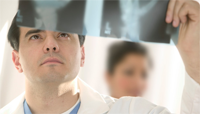 |
Key to Maintaining Bone Mineral ContentResearchers at the University of Missouri-Kansas City (UMKC) School of Dentistry have identified an important new mechanism in the process by which bones build and maintain both strength and elasticity. The results of their most recent findings were published in the January 21 issue of the Journal of Biological Chemistry. |
 |
Kneedy: The Future of Arthritis CareArthritic joints, especially knees, hobble millions of Americans and cost billions in treatments that yield so-so results. No cure exists. Or does it? Now MU researchers including Jimi Cook are poised to offer a new treatment that could revolutionize arthritis care. |
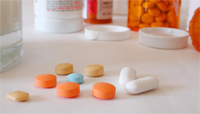 |
MU Chemist Discovers Shortcut for Processing DrugsJerry Atwood, Curator’s Professor and Chair of the Department of Chemistry in the MU College of Arts and Science, has recently published a paper – his 663rd in a refereed journal – that states that highly pressurized carbon dioxide at room temperature could replace the time consuming and expensive methods currently used to manufacture certain pharmaceutical drugs. |
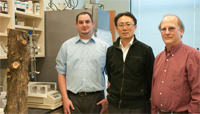 |
Nuisance Tree Brings a New MRSA TreatmentA team of researchers from the University of Missouri presented promising evidence that a compound from a pesky plant could possibly be used to treat acne and infections. |
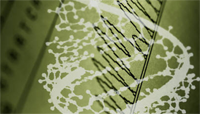 |
ADAM-12 Gene Could Hold Key to Cancer, Arthritis and Cardiac TreatmentsADAM-12 is not only the name of a 1970’s television police drama – it’s also the gene that University of Missouri researchers believe could be an important element in the fight against cancer, arthritis, and cardiac hypertrophy, or thickening of the heart’s walls. |
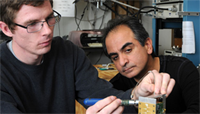 |
New Camera Makes Seeing the “Invisible” PossibleA research team, led by professor Reza Zoughi, has developed a handheld camera that uses millimeter and microwaves signals to peek inside materials and structures in real time. |
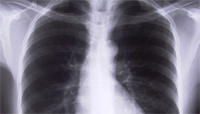 |
Infection, Not InflammationAided by a new experimental model, scientists are a step closer to understanding how cystic fibrosis (CF) causes lung disease in people with the condition. The findings, published online April 28 in the journal Science Translational Medicine, could help improve treatments for lung disease, which causes most of the deaths and disability among people with CF. |
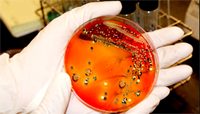 |
Safer Turkey DinnersFood scientists at the University of Missouri have developed a faster and more accurate way to test poultry and eggs for live salmonella contamination. |
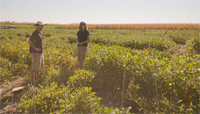 |
Healthier Snacks through Improved SoybeansTo cardiologists, there is no safe amount of trans-fat that a person can eat. The more trans-fat consumed, the greater the production of the bad cholesterol that damages the heart. |
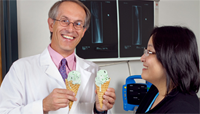 |
Pumping up the Nutrition of Ice CreamWhen most ice cream makers dream up new flavors of America’s favorite frozen treat, they usually look to over-the-top additions such as chocolate chunks, exotic fruits and luscious bits of cookies and candy. Ingolf Gruen is taking a different approach. |
Reviewed 2019-08-30